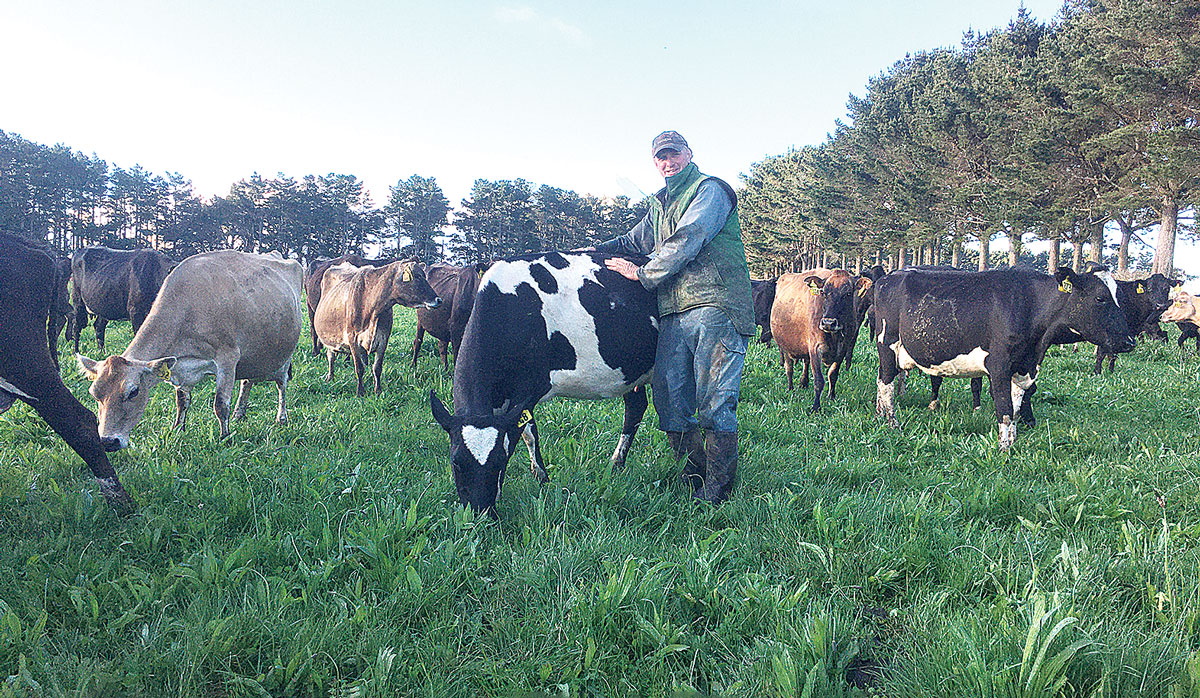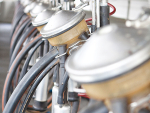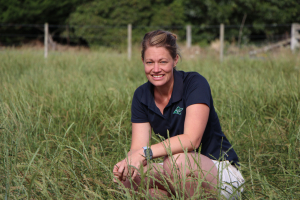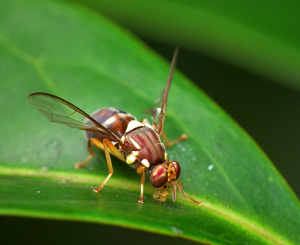The couple farm 142 hectares (350 acres) at Riverlea near Kaponga, in South Taranaki (near Mt Egmont) milking 320-head through a 44-bale rotary. They are progressing towards a F8/J8 herd with a production average of 500-550 MS per cow.
Their production is sitting at 1,250 kgMS per ha, and they recently recorded their highest production on-farm at 159,970 kgMS. Their average BMCC [Bulk Milk Cell Count] runs at 120,000. Their local vet practice acknowledges all of its clients’ level of antibiotic use on-farm with a ranking between one and 10 – with 10 being the highest. The area average is seven. McCarty’s is 1.5 – one of the lowest within this practice.
Their secret? In part, a chance conversation during a maize overload crisis. John said they were smashed by Cyclone Gita four years ago, and his maize crop, which was poised to yield 23T/ha was torn down to 15T/ha. He decided the fallen crop left in the paddock was too valuable to waste, so after discussing it with his vets, he made the call to carefully feed the paddock off in small breaks. Although it had never been done, and the vets warned against it, it was working…until the cows broke out.
“I’d got through 30 days, and they were cleaning up the cobs like they were turnips,” said John.
“They were loving them. And, then the morning after they broke out I got the call, ‘There’s four cows down in the paddock, two down in the shed, and one on the race.’ I got to the shed and by that time there were cows down all over the place with acidosis. We got two vets out, and started treating them as fast as we could.”
John estimates the cows lost an estimated 0.5 – 0.75 in body condition score and he was dreading what lay in front of them at calving because of the metabolic trauma and his herd’s rapid weight loss.
Probiotic Revolution’s Chris Collier recommended adding BioRumen DFM, a direct fed microbial, which has been fortified with uprecedented amounts of probiotic bacteria, probiotics, enzymes and yeasts.
Importantly, 70-80% of a mammal’s immune function is driven by the bacteria in their body – most of which is in the lower gastrointestinal (GI) tract.
So getting the right concentrations of microencapsulated probiotics to the sweet spot – to outcompete pathogenic bacteria – allows cows to fight infection on their own.
The yeasts also stabilise the rumen at a healthy pH of 6-7. John said he couldn’t believe how well it worked.
“We had no acidosis, no retrained cleaning, our SCC was 110,000. And, that was the year we achieved a production record by 7,000 kgMS – even though the cows started from the worst position possible.”
Waste not, want not John and Donna have a feed pad, because they believe that maize is an expensive feed to have trampled into a paddock. They don’t feed meal in the bale. They add BioRumen DFM to their maize silage, and the cows have access to it before the afternoon milking. John said he already used organic fertilisers, and the probiotic path had always interested him.
“I’m not organic and I probably never will be, but I’ve been interested in not using antibiotics to treat mastitis.”
 |
|---|
|
Before drying off last season, the McCartys didn't use any traditional intermammary antibiotics on the herd.
|
Changing their approach, they have now completed two seasons using no antibiotics for mastitis.
This season the 25 clinical cases of mastitis in total have been instead treated with a potent oral probiotic drench for four to seven days. It cost $11.50/treatment, with nil milk withhold. Twenty-four have recovered. One was culled.
“You know, I had some cows that I thought would never come right. One had a rock-hard quarter, and when I’ve treated those cows in the past with antibiotics I’d get maybe a 30 percent cure rate,” John said.
“With the ImmunoMax drench [a treatment product which includes 190 billion Colony Forming Units/dose], five days after I started, the quarter was still rock hard, and I remembered that Chris [Collier] said it might take six or seven days. I drenched her again on the sixth morning, and I noticed the quarter was starting to soften.
“On the seventh morning I missed her completely because the swelling had gone, so I never even saw her come into the shed. I deliberately made sure I caught her on the next milking, and I stripped her, and she didn’t have a trace of mastitis anywhere.”
Before drying off last season, they didn’t use any traditional intermammary antibiotics on the herd.
However, they did draft and dose 77 SCC-problem cows with ImmunoMax through the water trough. The qualifying criteria included:
1. They either had one clinical case of mastitis during the season.
2. One herd test over 300,000 SCC.
3. Or two herd tests over 150,000 SCC. It cost John and Donna just over $17/cow (with the added benefit of nil withholding), compared to approximately $28/cow for antibiotic dry cow treatment (without teat seal).
The rest of the herd were fed the herd’s probiotic, BioRumen DFM – albeit in higher dose rates – during the last three weeks of their dry period.
“Of those 77 problem cows, four came in with clinical mastitis and the overall herd SCC is similar to last year at around 120,000,” John said.
“It could have been luck, but I’m happy to promote this as an alternative to antibiotics.”



















